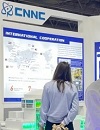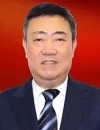 |
||
|
Russian regulator issues the license of operation of the fuel fabrication facility for BREST-OD-300 reactor TVEL, PUBLISHED 15.04.2024 The Federal Service for Environmental, Technological and Nuclear Supervision (Rostechnadzor) has issued a license to Siberian Chemical Combine (an enterprise of Rosatom Nuclear Fuel Division in Seversk, Tomsk Region) to operate a nuclear installation of the Unit for fabrication and refabrication of dense nuclear fuel. The Fabrication/Refabrication Unit is facility of the Pilot Demonstration Energy Complex (PDEC), which is under construction in Seversk under the strategic "Proryv" (or "the Breakthrough" project). PDEC is a cluster of nuclear technologies of the future, it includes three unique interconnected facilities: a unit for the production (fabrication/refabrication) of mixed uranium-plutonium nitride nuclear fuel, a power plant with an innovative generation IV fast neutron reactor BREST-OD-300, and a unit for the reprocessing of irradiated fuel. Thus, for the first time in the global nuclear industry, a nuclear power plant with a fast reactor will function with an on-site closed nuclear fuel cycle. On March 25, 2024, during the international forum ATOMEXPO-2024 in Sochi, a test launch of the carbothermal fusion line at the fuel fabrication unit was started via a teleconference with Seversk. Obtaining the license issued by Rostekhnadzor enables to proceed to the next stage of equipment and technological modes testing. So farm the current license conditions allow comprehensive testing of the equipment at all shop-floors of the complete chain of BREST-OD-300 fuel manufacturing using depleted uranium. For the BREST-OD-300 fast reactor, Rosatom has developed innovative mixed dense uranium-plutonium nitride fuel (so-called SNUP fuel). It is based on two key components - depleted uranium, which is a by-product of uranium enrichment for nuclear reactors, and plutonium extracted from irradiated nuclear fuel. At the current stage, using depleted uranium does not carry any risks in terms of nuclear and radiation safety. This material consists almost entirely of the stable isotope uranium-238 with the content uranium-235 of about 0.1% (in natural uranium it is 0.7%, and in nuclear fuel for "thermal" reactors of NPPs - up to 5%). At the next stage, after obtaining the relevant Rostechnadzor authorization for plutonium handling, the equipment of the facility could be used to produce the final MNUP fuel of the BREST reactor core. Topics: NFC, Rosatom, BREST, TVEL Other news: 417 nuclear units are operating in the world 58 units are under construction. HTR-PM starts commercial operation It is an important pathway for optimizing energy structure, ensuring reliable energy supply, and contributing to the dual carbon goal. Lepse Floating Technical Base Dismantlement Project has been successfully implemented To discharge spent nuclear fuel, the Lepse was placed in a specially designed and built onshore sheltering site. This made it possible to prevent any weather effects. |
Hero of the day 
The Forum, which became the 13th one, set a record in terms of the number of participants - about 4,500 from 75 countries (ten greater than in 2022). The event was honored by the presence of representatives of business, government agencies, and international organizations. INTERVIEW
CNNC OPINION
Han Yongjiang |

